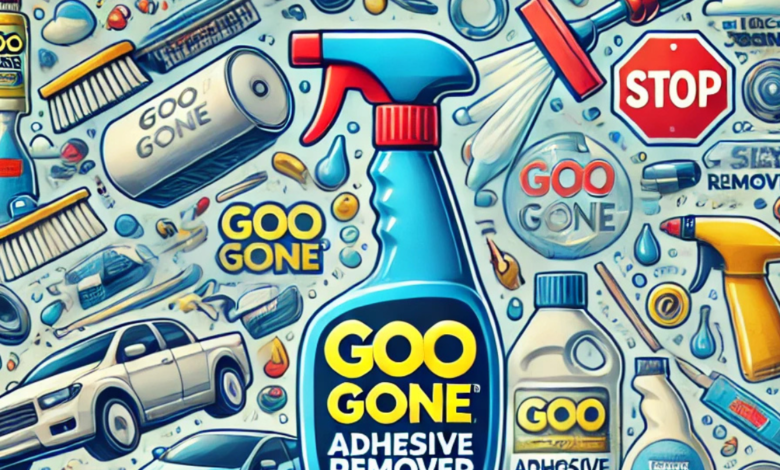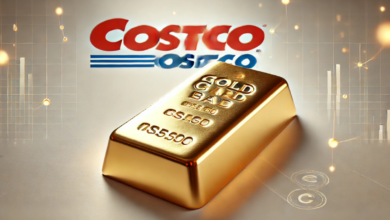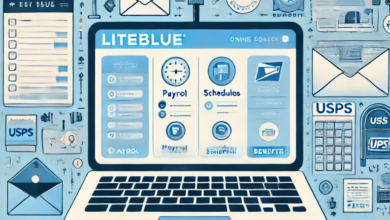The Ultimate Guide to Goo Gone: Everything You Need to Know

Introduction to Goo Gone
Goo Gone is a powerful adhesive remover that has become a staple in households and toolkits worldwide. Known for its ability to tackle sticky messes, Goo Gone is a lifesaver in cleaning up unwanted adhesive residues, grease, and other stubborn substances. Its unique formulation breaks down adhesives without damaging surfaces, making it a go-to solution for various cleaning tasks.
Originally developed to solve the problem of removing stickers and labels, Goo Gone has grown in popularity due to its versatility and effectiveness. Over the years, it has expanded beyond adhesive removal to help with tough cleaning jobs in kitchens, workshops, and even automobiles. Whether dealing with gum stuck to your carpet or removing the sticky residue left behind by tape, Goo Gone can handle it.
Why is Goo Gone a household essential? Its ease of use, broad range of applications, and ability to restore surfaces to their original condition make it indispensable. Unlike abrasive cleaners, Goo Gone works gently yet effectively, ensuring you achieve professional-quality results at home. As we delve deeper, you’ll discover its full potential and how it can simplify your cleaning routine.
Types of Goo Gone Products
Goo Gone offers diverse products tailored to meet specific cleaning needs. Each product is formulated to tackle different messes while maintaining the brand’s core effectiveness. Here’s an overview of their most popular options:
- Goo Gone Original: The classic formula designed for everyday adhesive removal. It works wonders on price tags, stickers, and glue.
- Goo Gone Spray Gel: This convenient spray formula clings to vertical surfaces, making it perfect for walls and other hard-to-reach areas.
- Goo Gone Pro-Power: A heavy-duty version that tackles industrial-strength messes, including tar and hardened adhesives.
- Goo Gone Automotive: Specially formulated for car interiors and exteriors, this product helps remove sap, tar, and bumper stickers without damaging paint.
- Speciality Products include Goo Gone Grout Cleaner and Goo Gone Kitchen Degreaser, tailored for specific cleaning challenges.
Matching the formula to your task is essential when choosing the right Goo Gone product. For instance, while the original formula is excellent for most household tasks, the Pro-Power variant might be more suitable for construction or automotive uses. When compared with other adhesive removers, Goo Gone consistently stands out for its effectiveness, ease of use, and surface safety.
How to Use Goo Gone Effectively
Using Goo Gone is simple, but following the correct steps ensures optimal results and surface protection. Here’s a step-by-step guide to using Goo Gone effectively:
- Prepare the Area: Ensure the surface is dry and loose debris-free. If working near sensitive materials, lay down protective coverings.
- Apply Goo Gone: Depending on the product, either spray or pour a small amount directly onto the affected area. Allow it to sit for a few minutes to penetrate the adhesive.
- Scrub or Wipe: Gently remove the residue with a soft cloth or a non-abrasive scrubber. For tougher stains, repeat the process as needed.
- Clean the Surface: Wipe the area with warm, soapy water to remove any Goo Gone residue, leaving a clean and fresh surface.
Tips for Success:
- Test a small, inconspicuous area before full application to ensure compatibility.
- Use Goo Gone sparingly; a little goes a long way.
Common Mistakes to Avoid:
- Avoid using Goo Gone on unfinished wood, silk, leather, or rubber, as it may cause damage.
- Do not let Goo Gone sit for extended periods; this can lead to discolouration or staining on sensitive materials.
Beyond adhesive removal, Goo Gone can clean crayon marks, remove sap from tools, and even restore tarnished surfaces, proving its versatility and reliability.
Safety and Precautions
While Goo Gone is generally safe to use, it’s essential to handle it responsibly. The product contains ingredients that break down adhesives but may adversely affect certain materials and surfaces. Here’s what you need to know:
- Ingredients: Goo Gone is made from citrus-based solvents and other cleaning agents. While effective, these components can irritate skin or eyes if mishandled.
- Handling Tips: To protect your skin, always wear gloves when using Goo Gone. Work in a well-ventilated area to avoid inhaling fumes.
- Surface Testing: Before applying Goo Gone to a new surface, test it on a hidden area. This ensures the product won’t cause discolouration or damage.
- Storage Recommendations: Keep Goo Gone in a cool, dry place, away from direct sunlight and out of reach of children or pets.
- Environmental Considerations: Goo Gone is not classified as eco-friendly due to its chemical composition. To minimize ecological impact, dispose of any unused product and containers responsibly.
Common Applications of Goo-Gone

Goo Gone’s versatility shines in its wide range of applications. Here are some common scenarios where it proves invaluable:
Everyday Household Uses
From removing price tags and tape residue to cleaning up crayon marks on walls, Goo Gone is a household hero. It restores surfaces like glass, countertops, and tiles to their original condition, making your home sparkle.
DIY and Craft Projects
Crafters love Goo Gone for its ability to clean up project glue spills and adhesive residues. It’s particularly useful when working with hot glue, stickers, or decals.
Automotive and Outdoor Uses
For car enthusiasts, Goo Gone helps remove sap, tar, and bumper stickers without damaging paint or windows. It’s also great for cleaning grills, outdoor furniture, and tools.
Commercial and Industrial Applications
Goo Gone tackles grease, oil, and industrial adhesives in professional settings, making it an essential tool for maintenance teams and contractors.
Troubleshooting and Alternatives
Despite its effectiveness, Goo Gone may not be suitable for all situations. Here’s how to handle potential issues:
- Surface Damage: If Goo Gone causes discolouration, clean the area immediately with warm, soapy water and consult a professional if needed.
- Alternatives: For eco-conscious users, vinegar and baking soda can effectively remove light adhesive. DIY solutions like rubbing alcohol or oil-based cleaners work well for specific tasks.
Knowing when to use Goo Gone and when to explore alternatives ensures you achieve the best results without compromising surfaces.
Conclusion
Goo Gone is a versatile and effective solution for removing adhesives and tackling stubborn messes. Its diverse product line, ease of use, and reliable results make it an essential household item. By following the steps and precautions outlined in this guide, you can maximize its potential and enjoy a cleaner, more organized space. Whether you’re a homeowner, crafter, or professional, Goo Gone is a tool worth having in your arsenal.
Frequently Asked Questions (FAQs)
- Is Goo Gone safe to use on all surfaces?
- Avoid using it on unfinished wood, silk, leather, or rubber.
- Can Goo Gone be used on fabrics or clothing?
- Yes, but test a small area first and launder the fabric after application.
- What is the difference between Goo Gone Original and Spray Gel?
- The Spray Gel is designed for vertical surfaces and clings better than the liquid formula.
- Does Goo Gone leave a residue?
- It may leave an oily residue, which can be cleaned with warm soapy water.
- Is Goo Gone safe for pets and children?
- Keep it out of reach and avoid direct contact, as it can be harmful if ingested or applied to the skin.
You May Also Read: https://latestcryptonewz.com/jane-street-internship/





